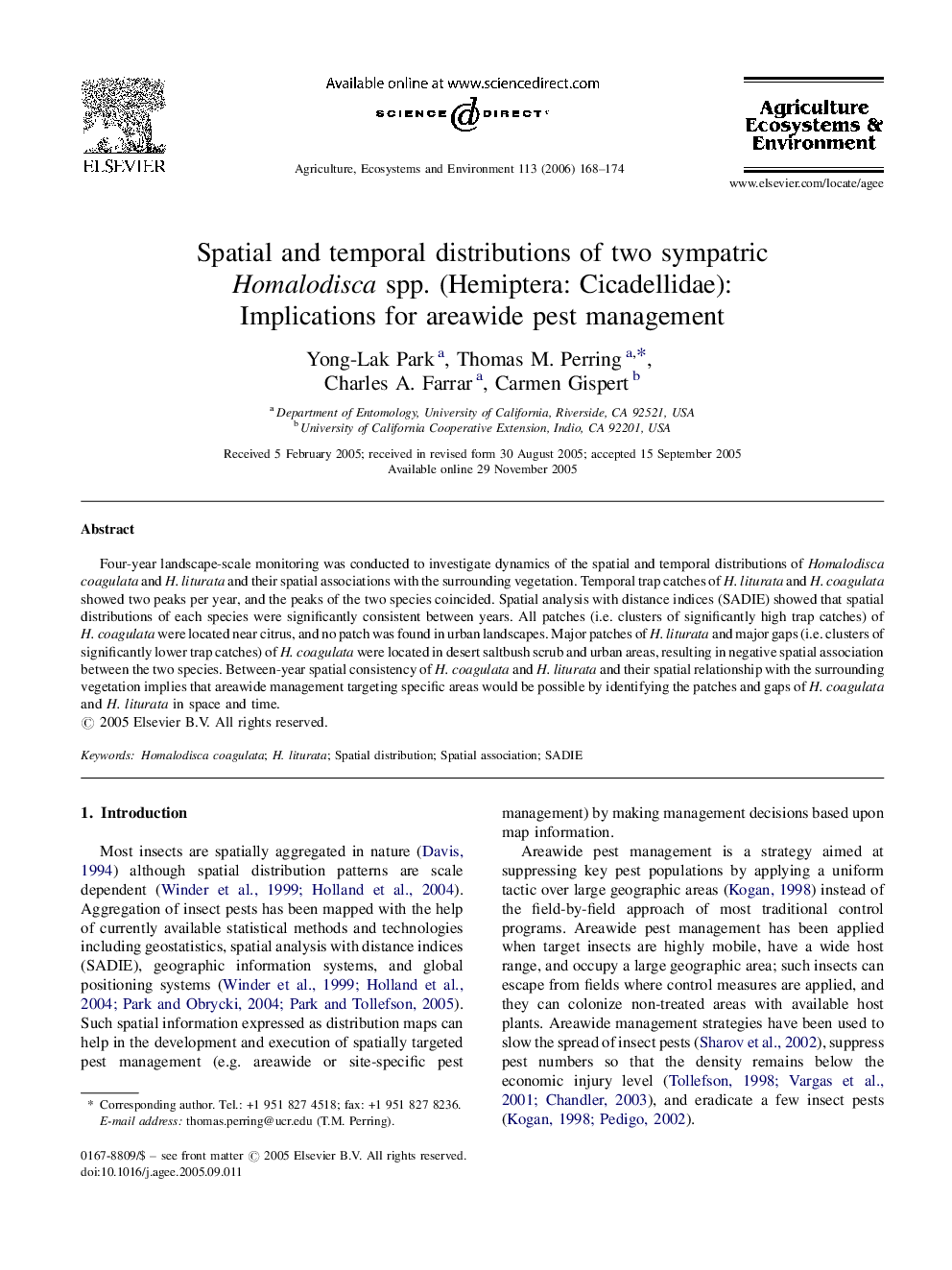| Article ID | Journal | Published Year | Pages | File Type |
|---|---|---|---|---|
| 2415966 | Agriculture, Ecosystems & Environment | 2006 | 7 Pages |
Four-year landscape-scale monitoring was conducted to investigate dynamics of the spatial and temporal distributions of Homalodisca coagulata and H. liturata and their spatial associations with the surrounding vegetation. Temporal trap catches of H. liturata and H. coagulata showed two peaks per year, and the peaks of the two species coincided. Spatial analysis with distance indices (SADIE) showed that spatial distributions of each species were significantly consistent between years. All patches (i.e. clusters of significantly high trap catches) of H. coagulata were located near citrus, and no patch was found in urban landscapes. Major patches of H. liturata and major gaps (i.e. clusters of significantly lower trap catches) of H. coagulata were located in desert saltbush scrub and urban areas, resulting in negative spatial association between the two species. Between-year spatial consistency of H. coagulata and H. liturata and their spatial relationship with the surrounding vegetation implies that areawide management targeting specific areas would be possible by identifying the patches and gaps of H. coagulata and H. liturata in space and time.
